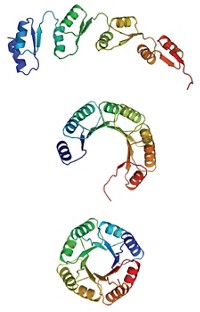Advertisement
Grab your lab coat. Let's get started
Welcome!
Welcome!
Create an account below to get 6 C&EN articles per month, receive newsletters and more - all free.
It seems this is your first time logging in online. Please enter the following information to continue.
As an ACS member you automatically get access to this site. All we need is few more details to create your reading experience.
Not you? Sign in with a different account.
Not you? Sign in with a different account.
ERROR 1
ERROR 1
ERROR 2
ERROR 2
ERROR 2
ERROR 2
ERROR 2
Password and Confirm password must match.
If you have an ACS member number, please enter it here so we can link this account to your membership. (optional)
ERROR 2
ACS values your privacy. By submitting your information, you are gaining access to C&EN and subscribing to our weekly newsletter. We use the information you provide to make your reading experience better, and we will never sell your data to third party members.
Synthesis
First β-hairpin β-helix peptide
August 7, 2006
| A version of this story appeared in
Volume 84, Issue 32
An unprecedented peptide structure-a cyclic β-hairpin β-helix (shown, with side chains)-has been designed, synthesized, and characterized by Thomas D. Clark and Christopher Brown of the Naval Research Laboratory, Washington, D.C., and Mallika Sastry and Gerhard Wagner of Harvard Medical School (J. Am. Chem. Soc., DOI: 10.1021/ja062737f). β-Helices are formed by peptides composed of alternating d- and l-amino acids and are stabilized by β-sheet-type hydrogen bonding. The antibiotic gramicidin A is a naturally occurring β-helical peptide, and several attempts have been made to synthesize similar structures, but previous efforts resulted in single- and double-stranded helical mixtures. Now, Clark and coworkers have solved that problem by tying together two appropriate peptide strands into a cyclic structure with β-hairpin ends. Such β-hairpin β-helices could serve "as structural templates for a variety of potential applications in bioorganic chemistry, from new transmembrane ion channels to new ligands for macromolecular targets such as DNA to building blocks for new protein architectures," Clark says.





Join the conversation
Contact the reporter
Submit a Letter to the Editor for publication
Engage with us on Twitter